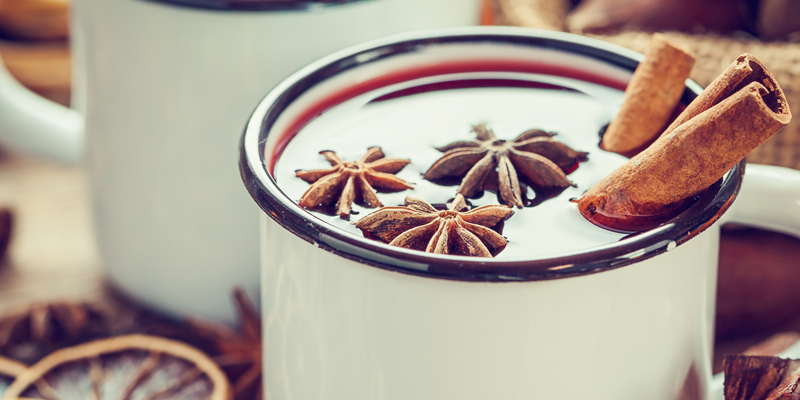
It’s not a question of if you’re going to drink mulled wine this holiday season, it’s a question of whose mulled wine you will drink. Warm mulled wine has become a winter standard, as much a part of the collective culture in snowy locales as gift-giving, fireplaces and bearskin rugs (well, at least gift-giving).
Mulled wine — that ever-variable mix of cheap wine, cloves, cinnamon and citrus — is so prevalent simply because the concept has been around since less-than-great wine has been around. So, forever. Here is the story of how mulled wine once again made it into your hands this year (probably).
The Ancient Greeks
The Ancient Greeks weren’t really the type of people to leave extra wine on the table, but there was always a part of the harvest that didn’t make it. In order to prevent waste (and to make sure as much alcohol as possible was palatable), the Greeks would dump spices into the wine and heat it up.
One story is that the Greeks called their spiced wine “hippocras,” which was named after the Father of Medicine himself, Hippocrates. As the blog “Historic Food” notes, though, Hippocrates’ name was likely added after the fact by people who didn’t know the man.
The Ancient Romans
Always the Greek copycat, the Romans heated their extra wine with spices to save any from being wasted. But the Romans added a twist and called their wine “Conditum Paradoxum,” and a version of this recipe is still sold today.
A 5th- or 6th-century Roman cookbook by a guy named Apicius details out the recipe, “Meadcrafter” writes. The recipe was a mixture of one part wine and one part honey that was boiled and then reduced. Added to the mix was pepper, bay leaf, saffron and dates.
The Medieval, Northern European Swill
Mulled wine really took off in the Middle Ages. The added spices were believed to make people healthier and had the benefit of tasting much better as well. The selection of wine wasn’t so great back then, after all, and it’s not like people could drink the water. Not to mention people had to deal with the Black Death, so they surely needed a drink anyway.
Merriam-Webster determined that the first use of the word “mull” as a verb, meaning “to heat, sweeten, and flavor (as wine or cider) with spices,” was in 1618, which was late-medieval prime time.
The idea, however, was already there. From the “Good Housewife’s Jewel” by British author Thomas Dawson in 1596 (h/t “British Food History”):
“Take a gallon of white wine, sugar two pounds, of cinnamon, ginger, long pepper, mace not bruised galingall [sic]…and cloves not bruised. You must bruise every kind of spice a little and put them in an earthen pot all day. And then cast them through your bags two times or more as you see cause. And so drink it.”
Victorian England to the Present
The common perception of mulled wine today comes from Victorian England. Despite the prudish outlook on life, mulled wine was a fine and dandy holiday season drink (in moderation).
Charles Dickens even wrote about a version of mulled wine called Smoking Bishop in his 1843 novel “A Christmas Carol.” Henceforth, mulled wine’s association with the holidays was solidified.
Most modern-day versions have orange, cinnamon, nutmeg, a (cheap) dry red wine and a bit of port or brandy. Everything is to taste (here are our eight favorite recipes), and the only right way to drink it is to drink it when the temperature starts to drop.

